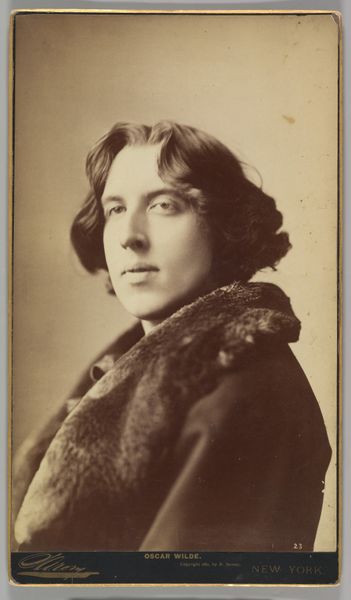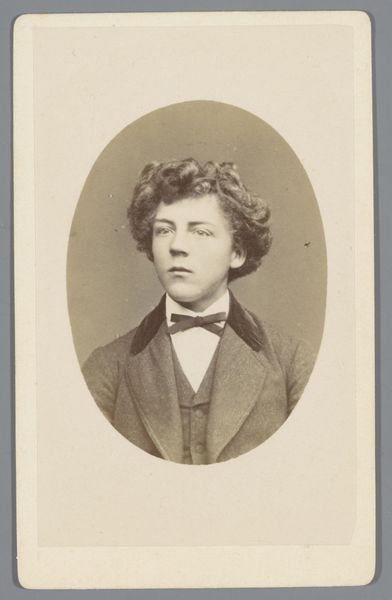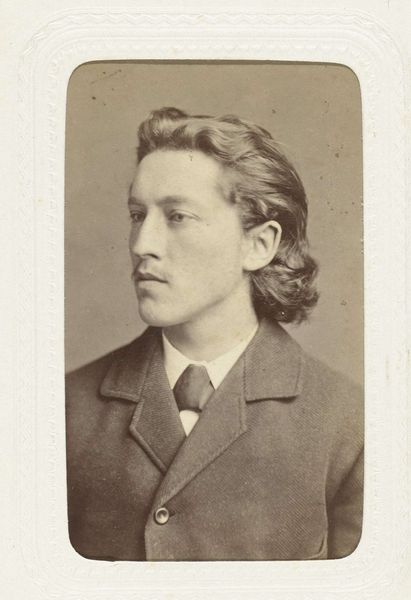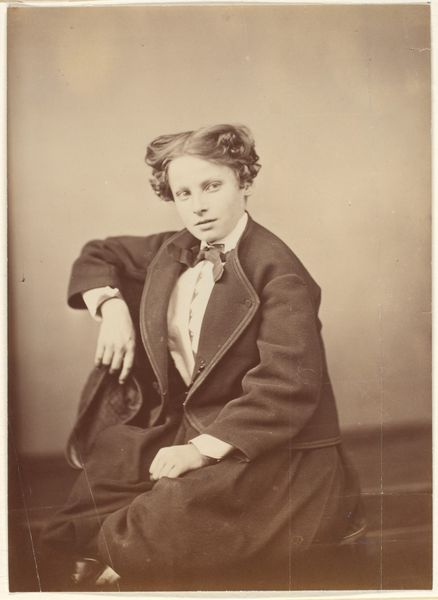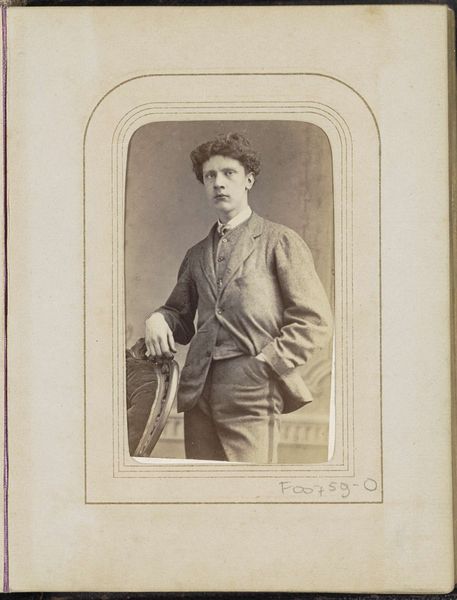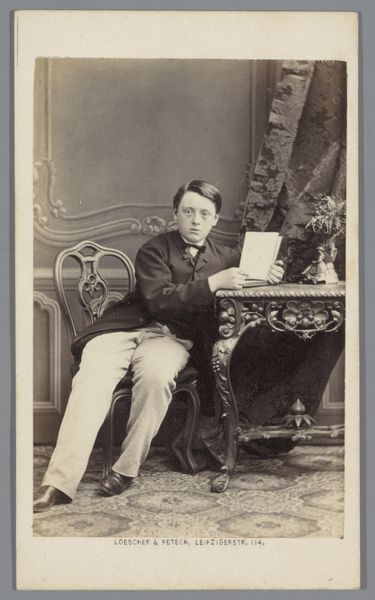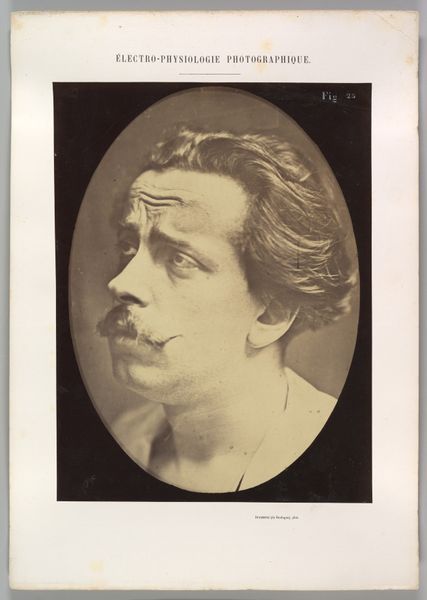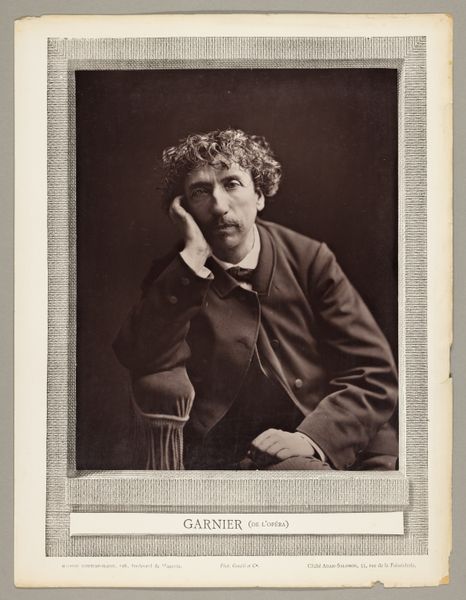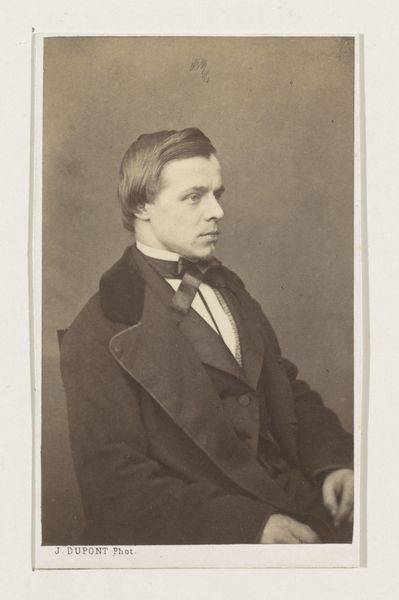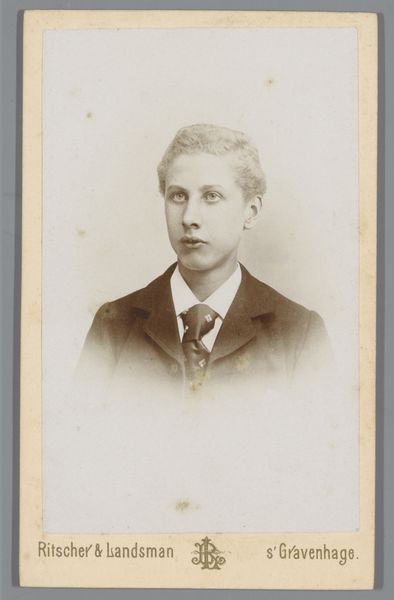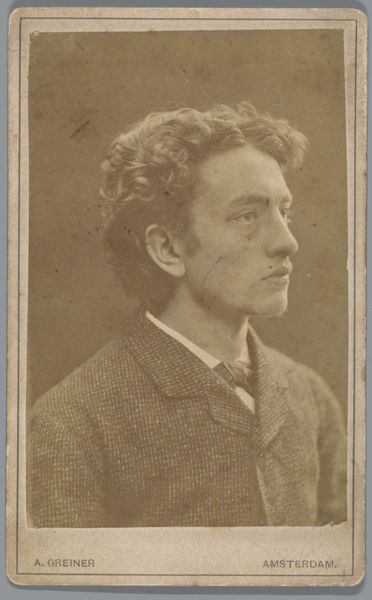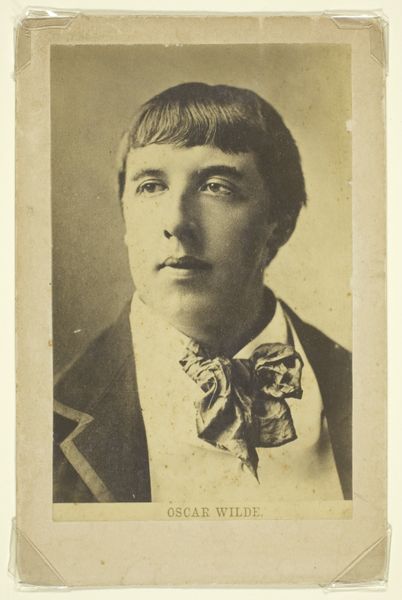
Dimensions: Image: 24.5 x 30.4 cm (9 5/8 x 11 15/16 in.)
Copyright: Public Domain
Editor: We're looking at Julia Margaret Cameron's photograph, "Lionel Tennyson, Freshwater," taken in 1869. It's a captivating portrait; there's such a soft focus, creating this dreamy, almost ethereal mood. What do you see in this piece, from your perspective? Curator: Beyond the aesthetic, I see Cameron deliberately crafting an image of Victorian boyhood intertwined with Romantic ideals. The soft focus, as you pointed out, wasn’t just a technical limitation but a conscious choice. Think about the socio-political context: this was a period grappling with rapid industrialization and urbanization. Cameron, along with others, sought refuge in an idealized past, and childhood became a symbol of innocence and unspoiled beauty. Editor: So the soft focus helps romanticize the subject, pulling away from stark realism? Curator: Precisely. It elevates Lionel Tennyson – son of the famous poet – to something almost allegorical. Consider too, the social function of photography at this time. It was becoming increasingly accessible but portraiture, especially of this artistic caliber, still carried connotations of class and status. This image is not merely documenting Lionel; it's constructing and performing identity, playing into societal expectations and aspirations. The way Cameron is celebrated by museums further shapes its meaning now. Editor: It's interesting to consider how access and intent shape how we interpret these portraits today. I had considered this simply a pretty picture! Curator: It *is* a beautiful photograph. And thinking about its beauty alongside its place in history enriches our understanding. Now when you look, what do you notice first? Editor: I am now noticing the staging. Lionel isn't just caught candidly, it is an arranged scene. Thanks for that insight!
Comments
No comments
Be the first to comment and join the conversation on the ultimate creative platform.
